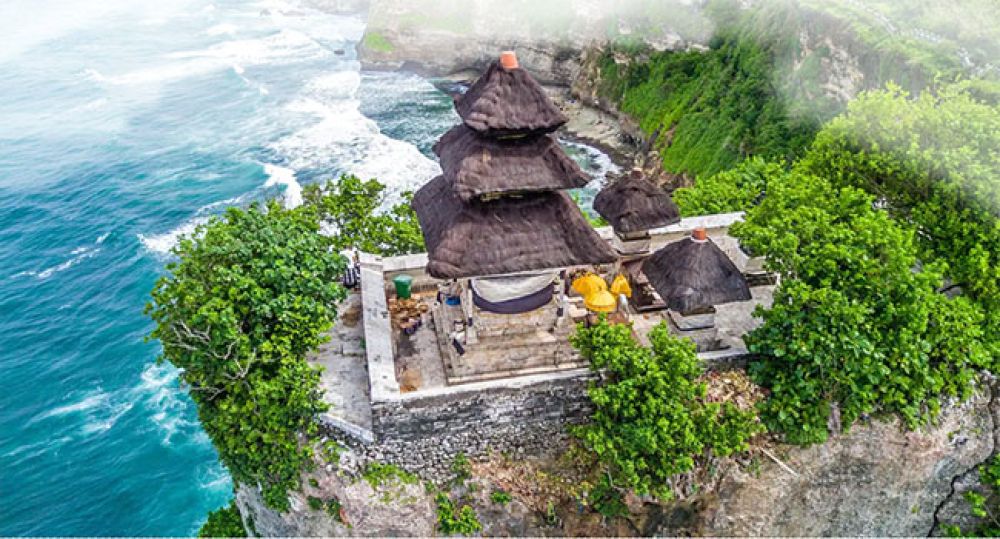

Bali has long been a prominent tourist destination, known for its vibrant culture, breathtaking landscapes, and spiritual heritage. One of the island's most iconic sacred sites is Uluwatu Temple, also known locally as Pura Luhur Uluwatu. Perched on a dramatic cliff 70 meters above the Indian Ocean, this temple offers stunning sunset vistas and is a key location in Balinese mythology and history.
Uluwatu Temple is part of a series of Balinese sea temples that are strategically located around the island's coast. Believed to be constructed in the 11th century by a Javanese sage, Empu Kuturan, the temple has an essential role in protecting Bali from evil sea spirits. It is one of the six spiritual pillars of Bali, and is dedicated to the deity Sang Hyang Widhi Wasa in his manifestation as Rudra.
Tourism at Uluwatu Temple started gaining traction in the 1970s and 1980s when Bali emerged as a global tourism hotspot. Visitors from around the world were, and still are, drawn to the island's unique culture and natural beauty. The temple's awe-inspiring location and cultural importance make it a must-visit destination on the island.
The Indonesian government recognized the potential of Bali's tourism and began investing in infrastructure and promotion in the late 20th century. Uluwatu Temple benefitted from this push, seeing improvements in accessibility and facilities for tourists. Shops, eateries, and a parking area were developed while maintaining the sanctity of the site.
Uluwatu Temple is not only a spiritual center but also a hub for cultural performances. The Kecak Fire Dance, a traditional Balinese dance that depicts the Ramayana epic, is performed here every evening at sunset, adding to the temple's allure. The performance, which takes place at an amphitheater near the temple, has become one of Bali's most famous cultural attractions.
Owing to the rise in the number of visitors, conservation efforts at Uluwatu Temple have increased. Authorities work to protect the ancient structures and the surrounding flora and fauna. Educating tourists on respectful conduct within the temple premises is part of these efforts, intending to preserve the site's integrity for future generations.
In recent years, tourism at Uluwatu Temple has experienced a shift with the rise of digital nomadism and eco-tourism. Visitors are becoming more interested in cultural immersion and sustainable travel experiences. As a result, the area has seen the development of eco-friendly accommodations and services that cater to this new trend.
The temple has also taken strides to accommodate the digital-savvy traveler with improved online presence and accessibility. Social media has played a significant role in boosting its popularity, with many travelers sharing their awe-inspiring sunset photos and Kecak dance videos, further solidifying Uluwatu Temple's status as an iconic Balinese destination.
Visitors to Uluwatu Temple can expect a rich cultural experience combined with breathtaking natural beauty. As tourism evolves, the temple remains a testament to Bali's ability to balance tradition and modernity, ensuring that it continues to captivate and inspire travelers from across the globe.